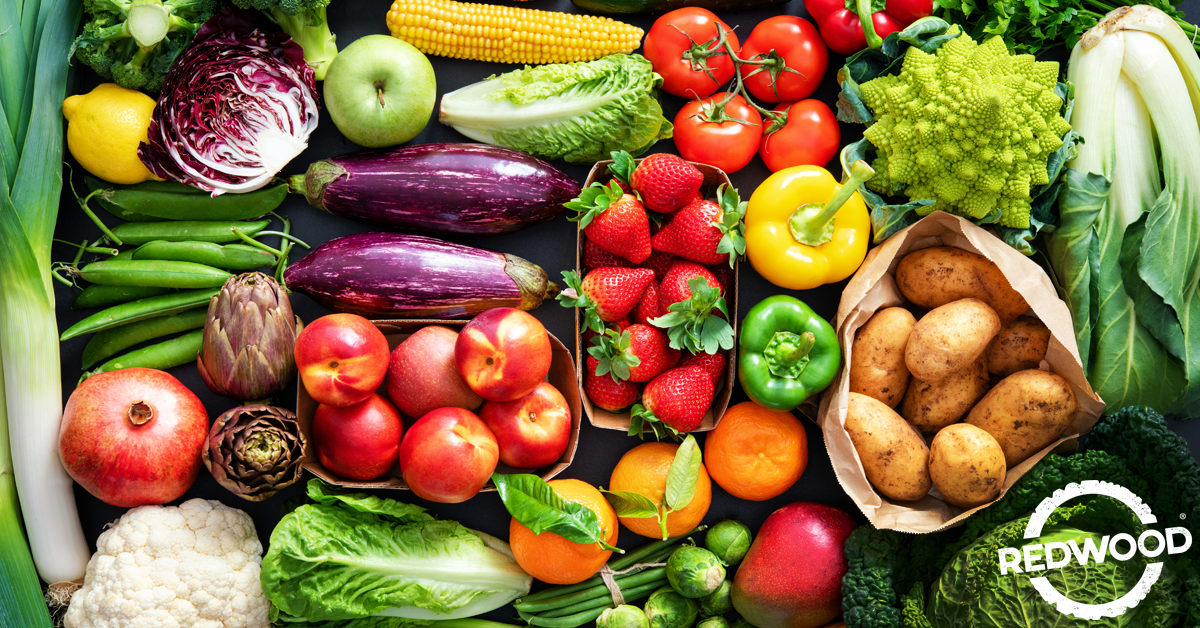REDWOOD LOGIN
Redwood PortalLTL
SCS
SCS Support
Rockfarm

Moving food shipments through the supply chain without causing damage is arguably one of the most important jobs in the industry. And rightfully so! After all, who enjoys contaminated or spoiled food items?
Thankfully, when it comes to food shipments (especially produce), modern supply chains are much more efficient than in past years. However, just because this process has improved over the years, that doesn't mean that incidents don't still happen. It is still quite possible for mistakes to occur that can negatively impact the quality and integrity of our global food supply.
We all depend on fresh food products to sustain life. Therefore, it’s more important than ever to enact procedures that can reduce the potential of spoilage or shipping delays of dry goods.
With all of that being said, there are two primary areas we want to focus on. These areas are food shipment traceability and packaging improvements. These tips, as simple as they may seem, can greatly reduce the potential of problems with the integrity and quality of your future food shipments.
Ready to learn a few useful tips?
Let's get to it!
We can thank the FDA and USDA for protecting our food shipments through constant tracking and monitoring of movement.
Regulations passed and signed into law by Congress since the late 1990s have ensured that food is monitored and tracked relentlessly. Technologies such as GPS, the Blockchain, and cloud-based tech helps us to fulfill these regulations with relative ease. Not only does this help to boost consumer confidence in the safe movement of our food, but it also reduces the spread of food-borne illness.
Since nearly 50 percent of all food-related illness and damage occurs at the supply chain level, it’s critical to verify that all food shipments are tracked from start to finish. From the moment food is processed, right through to the storage and finally, the delivery. All steps need proper monitoring, tracking, and adjustments where needed.
It behooves all shippers to verify that their carriers utilize tracking technology or other equipment and processes that meet this same goal. Not only will this reduce the potential of damage, it also verifies the shipper follows all regulations for traceability.
In short, if your carriers cannot provide close monitoring of the food products they move for you, run for the hills!
Most freight damage within the food supply chain occurs on the road during the actual transport of the goods.
However, when investigations are completed, the root issue tends to fall back to the packaging or freight stacking procedures used by the shipper. Some of the most common sources of food freight damage include broken pallets being used, heavy freight stacked on top of light freight, or products that are not properly secured to the pallet.
As such, to avoid the potential of damaged food products, follow these basic packing best practices:
It’s important to inspect each pallet before stacking products on them. Make sure all bottom and top boards are secured and not broken. When in doubt, recycle the broken pallet and use one that shows little to no signs of wear and tear.
It’s also important to cross-stack pallets when you have boxes or heavier packages. Doing such will help to distribute weight equally on the pallet.
To do this, simply rotate each new layer of boxes so that they are each running lengthwise in opposite directions. Think of it as a competitive game of Jenga!
Oh, and on that note, make sure that you place heavier boxes on the bottom-most layers. As you move up the stack, add lighter boxes to the top. This will keep your boxes from shifting around too much and potentially crushing the other boxes.
Once all packages are stacked on good pallets, the final step is to wrap them in a high-quality shrink wrap. While it might be tempting to use cheaper materials, this could end up costing you even more money in the end. That's the high cost of cutting corners!
There are some carriers who are better than others when it comes to shipping food throughout the supply chain. Whether it’s their on-time delivery record, reduced damage freight claims, or compliance with all shipping regulations, it’s always best to work with carriers who are at the top of their food supply chain game.
Experts in shipping such as a third-party logistics company can help you find, rate, and schedule the most qualified shippers within your food segment. From dry food shipment with an LTL carrier to a cold-storage movement with a dedicated cold supply chain FTL carrier, an experienced 3PL like Redwood Logistics can help you find the best carriers and save you money on shipping with them.
If you would like to improve the efficiency of your food shipments, contact the shipping experts at Redwood Logistics today!